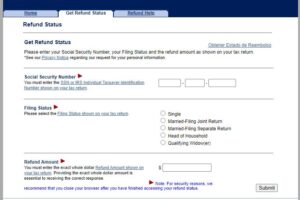자산의 종류 / 자산이란? By GK TAX4GA
What Is an Asset?
An asset is a resource with economic value that an individual, corporation, or country owns or controls with the expectation that it will provide a future benefit.
An asset can be thought of as something that, in the future, can generate cash flow, reduce expenses, or improve sales, regardless of whether it’s manufacturing equipment or a patent.

Current Assets
In accounting, some assets are referred to as current. Current assets are short-term economic resources that are expected to be converted into cash or consumed within one year. Current assets include cash and cash equivalents, accounts receivable, inventory, and various prepaid expenses.
회계학에서는 일부 자산을 유동자산(current)이라고 부르기도 한다. 유동자산은 현금으로 전환되거나 1년 이내에 소비될 것으로 예상되는 단기적인 경제적 자원이다. 유동자산에는 현금 및 현금성 자산, 외상매출액, 재고자산, 각종 선불비용 등이 포함된다.
Fixed Assets
Fixed assets are resources with an expected life of greater than a year, such as plants, equipment, and buildings. An accounting adjustment called depreciation is made for fixed assets as they age. It allocates the cost of the asset over time. Depreciation may or may not reflect the fixed asset’s loss of earning power.
고정자산은 플랜트, 설비, 건물 등과 같이 기대수명이 1년 이상인 자원을 말한다. 고정자산이 노후화됨에 따라 감가상각이라는 회계조정이 이루어진다. 이는 자산의 비용을 시간에 따라 배분하는 것이다. 감가상각은 고정자산의 수익력 손실을 반영할 수도 있고 반영하지 않을 수도 있다.
Depreciation General Rule
Generally accepted accounting principles (GAAP) allow depreciation under several methods. The straight-line method assumes that a fixed asset loses its value in proportion to its useful life, while the accelerated method assumes that the asset loses its value faster in its first years of use. 일반적으로 인정되는 회계원칙(GAAP)은 여러 가지 방법에 따라 감가상각을 허용한다. 정액법은 고정자산이 내용연수에 비례하여 가치를 상실한다고 가정하는 반면, 가속법은 자산이 사용 첫 해에 더 빨리 가치를 상실한다고 가정한다.
Financial Assets
Financial assets represent investments in the assets and securities of other institutions. Financial assets include stocks, sovereign and corporate bonds, preferred equity, and other, hybrid securities. Financial assets are valued according to the underlying security and market supply and demand.
금융자산 금융자산은 다른 기관의 자산과 증권에 대한 투자를 나타낸다. 금융자산에는 주식, 주권 및 회사채, 우선주 및 기타 하이브리드 증권이 포함된다. 금융자산은 기초가 되는 증권과 시장 수급에 따라 가치가 평가된다.
Intangible Assets
Intangible assets are economic resources that have no physical presence. They include patents, trademarks, copyrights, and goodwill. Accounting for intangible assets differs depending on the type of asset. They can be either amortized or tested for impairment each year.
무형 자산 무형 자산은 물리적으로 존재하지 않는 경제적 자원이다. 특허, 상표, 저작권 및 영업권을 포함한다. 무형 자산의 회계 처리는 자산 유형에 따라 다르다. 매년 상각되거나 손상 검사를 받을 수 있다.
While an asset is something with economic value that’s owned or controlled by a person or company, a liability is something that is owed by a person or company. A liability could be a loan, taxes payable, or accounts payable.
자산은 개인 또는 회사에 의해 소유되거나 통제되는 경제적 가치가 있는 것이지만 부채는 개인 또는 회사에 의해 빚을 지는 것이다. 부채는 대출, 지불해야 할 세금 또는 지불해야 할 계좌일 수 있다.
Some assets are recorded on companies’ balance sheets using the concept of historical cost. Historical cost represents the original cost of the asset when purchased by a company. Historical cost can also include costs (such as delivery and set up) incurred to incorporate an asset into the company’s operations.
일부 자산은 거래기록 비용의 개념을 이용하여 기업의 대차대조표에 기록된다. 거래기록 비용은 기업이 구매할 때 자산의 원래 비용을 나타낸다. 거래기록 비용은 자산을 기업의 운영에 통합하기 위해 발생하는 비용(납품 및 설정 등)도 포함할 수 있다.







